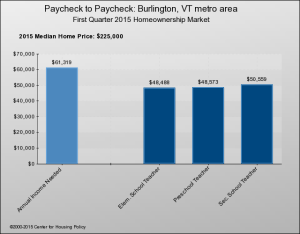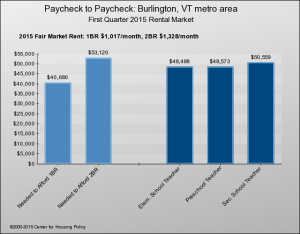There’s a particular form of workforce housing that’s getting a lot of attention lately: affordable housing for teachers. Much of that attention is being paid in California, of course, where many school districts are having trouble recruiting and retaining teachers who can’t afford the prohibitive housing costs (in Silicon Valley, for example, or San Francisco, where the mayor has announced plans to build 500 affordable units for teachers). Similar plans are afoot in Oakland, San Mateo, L.A.
But housing complexes for teachers have arisen on the East Coast, too, mostly in bigger cities — Newark (pictured), Baltimore and Philadelphia, with a development in Springfield, Mass., in the pipeline. These are projects aimed at Teach for America recruits for these cities — recent college graduates who spend two or three years in public or charter schools before they move on to other pursuits.
Baltimore and Philadelphia, with a development in Springfield, Mass., in the pipeline. These are projects aimed at Teach for America recruits for these cities — recent college graduates who spend two or three years in public or charter schools before they move on to other pursuits.
Not all the teacher-housing initiatives are urban, though. Several counties in North Carolina have provided, or pledged to provide, affordable housing for teachers, as has McDowell County, W. Va., in a project carried out with the American Federation of Teachers. In West Virginia, the hope is that the housing will help attract teachers to a place where they otherwise wouldn’t be inclined to settle.
Other states use housing as a teacher-recruitment tool in different ways. Oklahoma offers low-interest loans, for example. Texas offers mortgage assistance for teachers, and Mississippi subsidizes down-payments and closing costs. These happen to be states with pronounced teacher shortages.
Vermont has a teacher shortage, too — perhaps not as dire as those states’, but a shortage nevertheless. According to the Agency of Education’s “Designated Shortage Areas” for 2015-16, teachers of English, Spanish and special education were needed in all counties, and math teachers were needed in half the counties. Could it be that Vermont’s housing costs are a barrier to teacher recruitment? And if so, would it make sense for school districts — which are being encouraged to merge anyway — to collaborate in finding ways to ease the housing burden?

Another line of argument is that school districts, instead of futzing with housing benefits, should simply pay teachers well enough so that they can afford to live in those districts.
In any case, teacher villages, or housing complexes, come in different forms, and it’s not always clear how they gibe with affirmatively furthering fair housing standards. The one in Newark, for example, has been criticized as an oasis for transient young white professionals in a gentrifying neighborhood. (For a nice overview of these programs in The American Prospect, click here.) Still, Vermont communities would do well to think about how they can make affordable housing available to middle-income people – such as teachers – who are hard pressed to pay market rates.
Consider educators in the Burlington metro area. The National Housing Conference’s interactive “Paycheck to Paycheck” matches housing costs (the annual salary needed to afford a house of median price, $225,000) and the salary needed to afford a one-bedroom or two-bedroom apartment.
When you run the model for three educators – preschool, primary and secondary school teachers — you find that:
They can’t comfortably afford the median mortgage…
… or the two-bedroom apartment…

